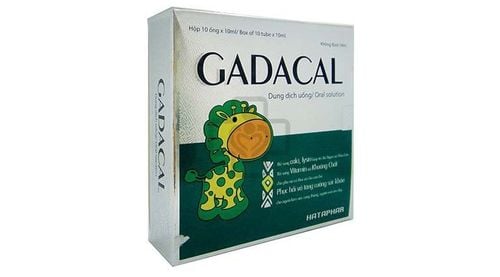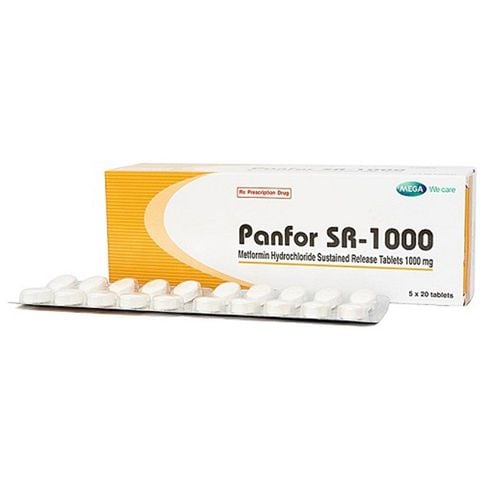This is an automatically translated article.
Malnutrition grade 1 means that the level of malnutrition is still underweight, so parents do not need to worry too much. What needs to be done at this time to help children develop comprehensively is to have a balanced and reasonable diet.1. Classification of malnutrition by grade
Malnutrition is known as a manifestation of the lack of essential micronutrients that affect the life process as well as the functioning and growth of the body. The rate of malnourished children in Vietnam has improved a lot at present. However, the correct awareness and implementation of improving the nutritional status of children is still essential.Normally, malnourished children will have a weight index lower than normal, but based on the weight index alone to assess whether that child is malnourished or not, it is not accurate. To assess nutritional status comprehensively, it is necessary to rely on the weight-for-age, height-for-age, and weight-for-height indexes.
1.1. Classification of malnutrition according to the World Health Organization (WHO - 1981) The World Health Organization uses weight-for-age indices with standard deviation (SD) compared with the reference population at the Center National Center of Health Statistics to classify different levels of malnutrition:
Child malnutrition grade 1: The child's weight ranges from – 2SD to – 3SD equivalent to the level of malnutrition. weight is 70-80% of the normal child's weight. Malnutrition grade II: The child's weight is in the range - 3SD to -4SD, equivalent to 60-70% of the weight of a normal child. Malnutrition level III: The child's weight is below - 4SD, equivalent to the current weight less than 60% of the normal child's weight. The WHO classification has the advantage of being fast and simple. , which is common and can be applied to many subjects, but has the disadvantage of not distinguishing between acute and chronic malnutrition, as well as details about the child's condition.
1.2. Classification of malnutrition in children according to Waterlow in 1976 The Waterlow classification method of malnutrition uses two indices of weight for height and height for age to classify acute malnutrition or malnutrition. Chronic and malnourished in the past:
Height for age > 90% or -2SD and weight for height > 80% or -2SD: child with normal nutritional status Height for age > 90 % or -2SD and weight-for-height < 80% or -2SD: underweight child Height for age < 90% or -2SD and weight for height > 80% or -2SD: malnourished child stunted body Weight for height < 80% or -2SD and height for age < 90% or -2SD : undernourished children emaciated - stunted 1.3. Classification of malnutrition in children according to Welcome 1970 Welcome classification method of malnutrition uses the weight-for-age index and this method is suitable for classifying severe malnutrition.
% weight-for-age from 60% to 80% and with edema: Kwashiorkor % weight-for-age from 60% to 80% and without edema: grade 1 malnourished children and grade 2 malnourished children 2% of weight for age less than 60% and with edema: Marasmus - Kwashiorkor % weight-for-age less than 60% and no edema: Marasmus

Trẻ suy dinh dưỡng độ 1 khiến nhiều cha mẹ lo lắng
2. Characteristics of malnourished children grade 1
Malnourished baby grade 1 is the level of malnutrition that is still underweight, so parents should not be too worried. However, parents need to know the signs showing the nutritional status of their children in order to have timely treatment plans to help children develop comprehensively.Children who are malnourished at this level usually weigh between 70% and 90% of normal child weight. In addition, there are a few signs parents need to pay attention to such as the thin layer of fat under the belly of the child, but at this time the child has no signs of anorexia or digestive disorders.
In addition, parents can use the growth chart to help identify the nutritional status of children. Growth chart is considered as a scientific tool to help monitor the development of children in the first years of life. This chart was developed by the World Health Organization (WHO) and certified for application by the Ministry of Health of Vietnam.
With the growth chart will be used by taking a fixed day, measuring the child monthly and recording the data on the chart. Then connect the data lines by month to get a line showing the weight and height of the child. This sugar is also the result of predicting the nutritional status of children. When the line of the graph is horizontal, it means that the baby is not gaining weight and also not growing in height. However, this curve is horizontal for 2 consecutive months, indicating that the child has health problems such as malabsorption, anorexia and signals that the child is at risk of malnutrition. If the line of the graph goes down, it shows that the child's growth is very alarming, the child has signs of dangerous malnutrition, and may be suffering from diarrhea, pneumonia or may also occur. It is caused by the mother giving the child complementary foods too soon, causing the child's digestive system to be disturbed... And when the straight line of the chart goes up and is in the safe area, it shows that the baby is developing normally.

Trẻ suy dinh dưỡng độ 1 là mức độ suy dưỡng vẫn còn đang ở thể nhẹ
3. Some measures to prevent malnutrition among children in the community
Improving the nutritional status of children helps children to be healthy and develop well intellectually to ensure future study and work. Some measures taken in the community to help prevent malnutrition in children, including those with grade 1 - mild malnutrition are as follows:Breastfeeding for the first hour after birth and prolong breastfeeding to about 24 months. Breast milk at this stage plays an important role, not only providing the most easily absorbed nutrients for the baby, but also adding antibodies to help the baby fight against bacterial factors or diseases in the environment. around. Have a proper and balanced diet. For children starting to eat solids, the time to do this is when the child is 6 months old, let the child use all 4 food groups to provide enough nutrients for the child, including: Food group with nutrients providing carbohydrates or nutrients. carbohydrates include foods such as cereals, potatoes, tubers...; food groups with nutrients providing fat include cooking oil, animal fat, butter, cheese... to help provide energy in the most concentrated form; food groups have nutrients that provide the necessary protein for the body; Nutrient food group provides vitamins and minerals to regulate the functions of the child's body. Parents should choose and process food to ensure food safety, to help children avoid intestinal infections, helminths... nutritional deficiencies.... In addition, parents should perform periodic deworming for children. In short, a child with grade 1 malnutrition is still underweight, so parents should not be too worried. What needs to be done now to help children develop comprehensively is to have a balanced and reasonable diet, choose safe foods and periodically deworm them.
In addition, the baby should also be supplemented with necessary micronutrients such as: Zinc, selenium, chromium, Vitamins B1 and B6, Ginger, acerola fruit extract (vitamin C),... to improve taste, eat well, reach the correct height and weight and exceed the standard, have a good immune system, strengthen the resistance to get sick less often and have less digestive problems.
For more nutritional knowledge and child care for each age, parents should regularly visit the website vimec.com and make an appointment with the leading doctors, pediatric and nutrition experts of the National General Hospital. Vinmec when needing advice on children's health.













